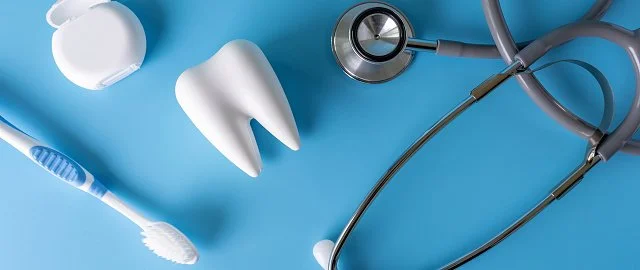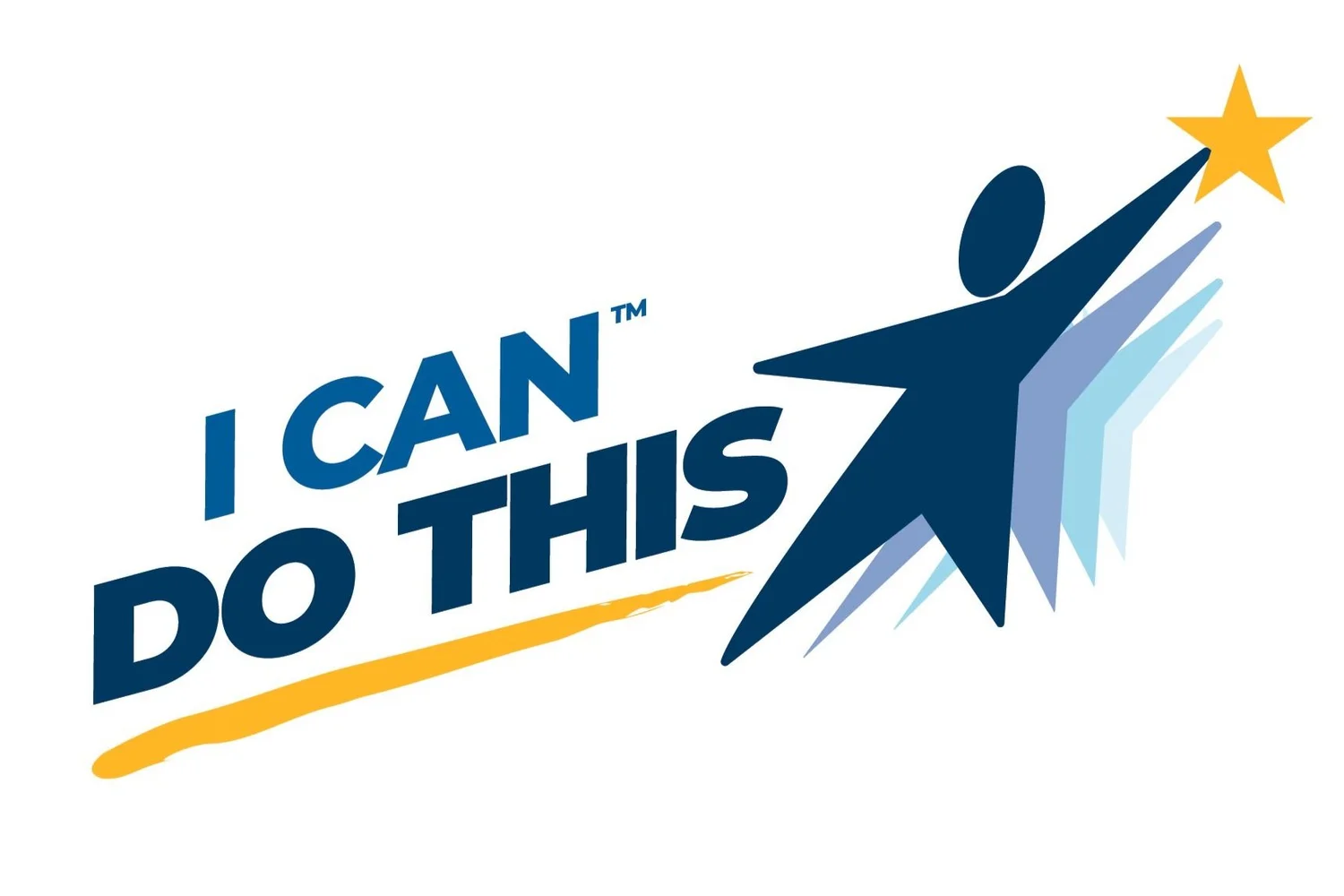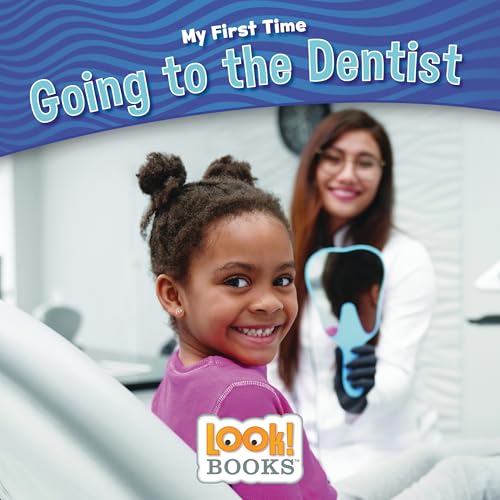
Go To The Dentist
“Either we spend time meeting children’s emotional needs by filling their cup with love, or we spend time dealing with behaviors caused from their unmet needs. Either way, we spend the time.”
— Pamela Leo
I Can Go To The Dentist!
Taking your child to the dentist is about more than just keeping their teeth sparkling. Research has shown that poor dental/oral hygiene can lead to inflammation and health issues throughout the body.
Dentists’ offices can be noisy and bustling. From your child’s perspective, there may be many new sights and sounds (the drill, tooth polisher, and water suction tube). Other children may be running around the waiting room. They might hear crying/screaming from patients already in the dentists’ chairs. Then, when it is their turn, a stranger in a mask will ask them to sit in an large chair with overhead bright lights and unfamiliar equipment on all sides. The masked stranger will then try to put tools in their mouth. What an unusual and frightening place a dentist’s office must seem to a child (and even some adults!). No wonder they might try to run away or refuse to open their mouths!
While your child might be afraid to go to the dentist, it is crucial to help them maintain healthy teeth and an overall healthy body. Avoiding going to the dentist because your child has already had a negative experience there, or because you know that your child often struggles in new situations and with new people, is not a good strategy. Regular visits to the dentist can help to prevent inflammation, and more invasive, painful procedures in the future.
Below are strategies to help your child understand what will happen at the dentist, and things you can do to set your child up for a successful visit.
If we can help our children prepare for what will happen at the dentist’s office, they will be more likely to participate and let the dentist give them a check-up and cleaning.
Preparation Before the Dentist Appointment:
Read books and watch videos about going to the dentist-
Show your child that other kids, adults, and even pets go to the dentist. Read books and watch videos that show your child step-by-step what to expect when they go to the dentist.
Engage in imaginative play about going to the dentist-
Use toy dentist tools on dolls, or even on yourself and your child, to act out what will happen at the dentist. Let your child get comfortable with the look of the tools, what they will be asked to do (for example, “open your mouth while I count your teeth”).
After you have played “dentist” a few times, try having a stuffed animal or doll go to the dentist and pretend to be scared. Have your child help the doll understand that counting teeth doesn’t hurt, and that brushing teeth doesn’t hurt.
Find the right dentist, and the right dental practice-
Search online and ask other families to find a pediatric dentist that might be a good fit for your child. There are some dental practices that are specifically geared towards children with special needs or anxiety, or sometimes there is a particular dentist at the practice who has experience working with children with special needs.
If your child has already had a negative experience at the dentist, or if you have a child with anxiety, sensory processing issues, or any other sort of special needs, look for a practice that is able to be especially patient, gentle, and accommodating. Various practices will specifically mention working with children with special needs on their websites, or will offer to have your child come in to meet the dentist and see the office before their appointment to help them prepare for their visit. If they don’t specifically offer a tour, don’t be afraid to ask for one; taking the extra time to put your child at ease by preparing for their appointment will be well worth the extra trip.
Talk to your child about what will be happening and when-
Tell your child that they will be going to the dentist and tell them what will happen during the appointment. Ask the dentist ahead of time what they will plan on doing at your child’s visit. When children are very young, sometimes they just count their teeth, and brush with a regular toothbrush. However, when children are older, the dentist might also use the tooth polisher, floss, or put on Fluoride. Just make sure that your child knows what will happen so that you can talk about it, and practice it.
Tell your child when they are going to the dentist. Depending on your child’s understanding, you can put it on the calendar and remind them during the week. Or, create a post-it countdown to the day so that they can visually see how close they are to their appointment with the dentist.
Give your child some control-
When trying something new, giving your child control over some part of the event can help them feel more willing to try it.
The light above the dentist’s chair is bright, and can be upsetting for some children. The dentist’s office often has sunglasses to borrow, but this is a great opportunity to give your child some control by letting them pick out a special pair of their own sunglasses to bring to the appointment to block out the light. Even with sunglasses, the light can sometimes be too bright for those kiddos with hyper-sensitivity to light. Try bringing a winter hat along too that can be pulled over your child’s eyes/sunglasses to block out even more light. Again, letting them pick the hat to bring gives them more control.
Prepare your for your trip to the dentist-
Bring rewards (lollipops, stickers, tablets), snacks, drinks, and even a favorite stuffed animal to help your child feel comfortable. If you bring your pretend play dentist kit, your child can give their stuffed animal a check-up while the dentist does your child’s check-up.
Bring sunglasses and hats to block out the bright light above the chair.
Offer to fill out any paperwork or questionnaires before the appointment so that you can focus on your child when you go in for the check-up. You can also ask if there is anything you can do ahead of time to help the appointment run smoothly and quickly. Can you send in pictures of your child’s mouth ahead of time? Can you count your child’s teeth before you go in?
At the Dentist Appointment:
Make modifications as needed-
Make sure you have had your morning coffee, because you will sometimes have to think on your feet and modify as needed in the moment. Even if your child is prepared and knows what to expect, sitting with their mouth open for a long time and having a stranger using tools that make noise might still be overwhelming for your child.
To keep your child going strong, you can offer to use a timer for 1 minute, or count to 10 before they get a break. This can look like, “Open your mouth wide while I count to 10 and then you can have a break!” Or, you can play/sing their favorite song, have your child complete the check-up on a stuffed animal while the dentist does their teeth, or get to watch a movie on a phone or tablet.
Ask the dentist to do the most essential things first in case your child becomes upset. What is the primary thing they want to get done this visit? Count their teeth? Polish their teeth?
If you can, try to go to the dentist with another caregiver so that one caregiver can be focused on the child, and the other can talk to the dentist/ask questions. Often when your child is young, the dentist asks questions about health, diet, brushing habits, etc. It can be hard to answer questions while you have a squirmy child on your lap, and you might forget to ask something if you are distracted trying to keep your child entertained.
End with SUCCESS- don’t wait until meltdown-
Once the dentist has started, it can be tempting to try and force your child to make it through to the end. However, this can backfire as your child then has the memory of a negative experience at the dentist. Even young children can make associations with places and people that were scary or unpleasant.
Try to end with success- even if you didn’t get through everything. This is tricky as you want to get through enough of the appointment that you can ensure your child is healthy, and so you may have to stretch your child’s ability to sit and follow directions a bit. This is where bringing some supplies and rewards can be helpful so that they are earning breaks and rewards throughout, not just at the end. If your child has a positive experience, it will be easier to come back in the future, and hopefully they will sit for longer the next time. Again, ask the dentist if there is anything that you can do at home to make the appointment shorter.
Reward for trying-
Try to create a positive association for trying something new, and reward them for doing as much as they were able to tolerate. You can even encourage them to do even more next time. This can look like: “Wow, you sat in my lap and let the dentist count your teeth! I am so proud of you! Next time, you can try to let the dentist brush your teeth too!”
Take pictures for next time-
Children benefit from seeing themselves doing something so that they can visualize doing it again. Try to snap some pictures of your child sitting in the chair/on your lap, wearing their sunglasses, with their mouth open wide, etc. The next time that you go to the dentist you can review the pictures with your child and talk them through what to expect. And, make sure to include the picture of them smiling with their reward after the dentist too! “Remember when we went to the dentist last time? You sat on my lap, you opened wide and let the dentist look inside. You were so brave!”
Please refer to the BEHAVIOR DECODER section below if you have already had a negative experience at the dentist and are looking for even more strategies, and the recommended BOOKS, TOYS and SUPPORTS, and VIDEOS sections below for vetted products and videos. Additionally, please use the RESOURCES section for further information and strategies about helping your child go to the dentist.
Recommended Books
Books for Toddlers (Ages 1-3)
As an Amazon Associate I earn a small percentage from qualifying purchases.
Books for Young Children (Ages 3-5)
As an Amazon Associate I earn a small percentage from qualifying purchases.
Books for Older Children (Ages 5+)
As an Amazon Associate I earn a small percentage from qualifying purchases.
Toys For Imaginative Play
Recommended Toys and Supports
As an Amazon Associate I earn a small percentage from qualifying purchases.
Watch & Be Empowered!
For Kids: This episode is themed everything DENTIST! To start, Elmo and friends help Julia prepare for a trip to the dentist. They use pretend play to act out what happens at the dentist. Then, the friends go to the dentist’s office and watch a child at the dentist. They see all of the tools that are used at the dentist, and act out the sounds they will hear.
For Kids: This clip from Sesame Street features a child going to the dentist. The child explains step-by-step what will happen at the dentist - including what tools will be used, and what they feel like.
For Kids: This clip from a Daniel Tiger episode follows a boy “Sam” who goes to the dentist. Children will see a real dentist chair and dentist equipment.
For Kids: In this episode, Daniel Tiger goes to the dentist for his first check-up. The dentist explains to Daniel what to expect, and let’s him participate in pretend play by playing “dentist” on a stuffed animal.
The strategy of using a “quiet roar” to help children open their mouth wide is a great way to explain to children what you need them to do at the dentist.
The songs in the episode are also helpful to use while at the dentist to remind your child about what to expect.
Behavior Decoder:
Oral health is imperative to overall health. And, if you postpone dental care because of the stress of going to the dentist, it can lead to your child needing even more extensive dental procedures down the line. In some cases, children even need to be sedated in order to complete invasive dental work. Hopefully, if we can figure out the triggers for your child at the dentist, we can be proactive in modifying the situation and reducing fears so that your child will be able to attend regular dentist appointments. Use the strategies below to try and pinpoint what is upsetting your child, and then the suggestions for modifications.
Write down the behaviors you are seeing, and try to look for patterns.
Is your child struggling with all personal hygiene tasks (washing/rinsing their hair, brushing teeth, cutting nails, toileting, etc.)? They might have an overactive sensory system that is making these activities either feel painful, uncomfortable or alarming. An Occupational Therapist who specializes in Sensory Processing would be a great resource to help your child learn how to better process these types of sensations.
Does your child always seem to struggle to sit still for long periods? Try having your child run around, and do “heavy work” before the dentist so that their body is calm and better able to sit for longer periods. You could also consider adding breaks into the dentist appointment so that they only have to hold still for short periods and then they can take a lap around the office. You could use a timer, or a number of activities before they have to come back (“You can jump 10 times and then we will come back and sit down.”)
Create a visual schedule for going to the dentist to create order and predictability.
Many children benefit from having visual supports to show them what the steps will be so that they will know what to expect. You can draw pictures with check boxes as you go along, or bring a book that you read about going to the dentist and show step-by-step what is happening.
You can also purchase visuals that are already made so that you can practice with them at home before you go, and then bring them to the appointment.
This is a free visual social story that you can follow along with: Dentist Social Story.
Here are some very reasonably priced pre-made visuals: Visual Aid Booklet, and Going To The Dentist Social Story.
Look at the activity of going to the dentist, and figure out where the stressors could be. Then, try to eliminate them by either modifying the activity, or preparing for the possible stressor.
Does your child become overwhelmed with noise, or frequently cover their ears? Many of the tools that a dentist uses make “strange” noises that can be alarming for kids. The noises from the suction tool, and the tooth polisher are unique noises that your child likely hasn’t experienced before. You can try covering your child’s ears, or purchasing noise reduction headphones. You can also make sure to highlight and practice those noises when playing pretend dentist with your child. Point out that certain tools make loud silly noises, and really ham it up so that your child knows to expect loud noises at the dentist and you can remind them (“Remember the suction from our toy kit. S-L-U-U-U-R-R-R-R-P!”)
Try to schedule a tour of the dentist’s office a day or two before so that your child can explore the space and see where they will be sitting. You can take pictures to show them later to remind them about where they will be going, and even take a picture of the dentist. Bring your visuals along so that you can walk your child through what to expect without any pressure to sit and tolerate the actual check-up.
As described in the step-by-step guide, bringing sunglasses and a winter hat to block additional light can help some children. While not possible in all offices, you can also request that the main overhead lights are dimmed to reduce additional light.
Does your child often become agitated in busy spaces? Some offices have side rooms where the door can be closed to block out additional sound and distraction. When making your appointment, ask if you can specifically request that room for your child.
Please refer to the RESOURCES section for additional strategies specifically for children with special needs.
As an Amazon Associate I earn a small percentage from qualifying purchases.


















